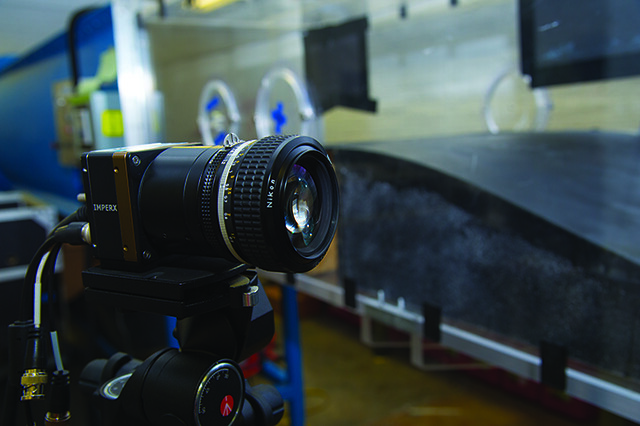Brian Thurow, W. Allen and Martha Reed associate professor in aerospace engineering, is working to adapt a camera technology called a plenoptic camera, or light-field camera, to study new methods for 3D velocity measurements in turbulent flows. Plenoptic cameras use a microlens array placed near an image sensor to record both the position and angle of light rays entering the camera. A conventional camera only records the position at which light rays strike an image sensor, causing depth-of-field and image blur. The additional light field information captured by a plenoptic camera allows for refocusing the image or changing the viewing perspective after the image has been captured. This technology can be used to produce more accurate 3D models in dynamic environments where a scene is constantly and rapidly changing, such as a wind tunnel experiment.
Through grants from the Air Force Office of Scientific Research, Army Research Office, Department of Defense University Research Instrumentation Program (DURIP) and the National Science Foundation (NSF), Thurow’s team has used their plenoptic camera technique for measurements in a turbulent boundary layer. Through the DURIP grant, Thurow has teamed with researchers from Florida State University to design and build a new generation of plenoptic cameras for advanced wind tunnel testing. With funding from the NSF, he has also partnered with researchers from the University of Illinois to study the effects that a porous medium, such as a gravel river bed, has on the turbulent flow over the medium.

